Combat aircraft. Big and peculiar
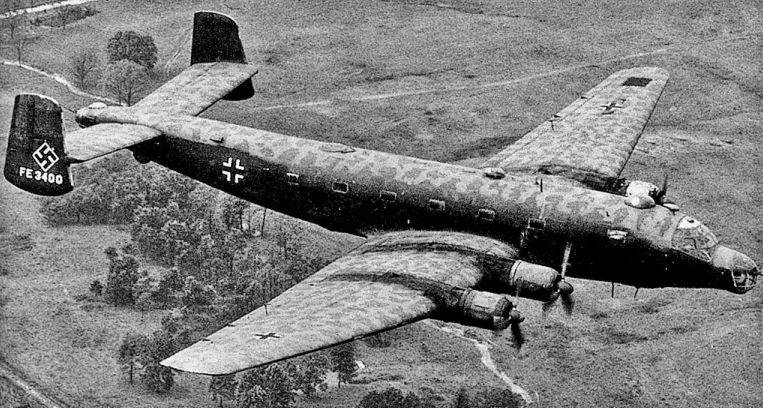
In general, I have great respect for almost all flying equipment that the Germans invented and designed before 1945. It makes sense. But today’s character can cause a storm of emotions on the topic "Why are you so ?!" And there are a number of good reasons for this.
In general, the 290th easily in terms of plot twist can compete with our Pe-3 or even outperform it. Pe-3P, for example, is a scout who was made of a fighter, which was made of a bomber, which was originally a fighter.
Beautiful, is not it?
That's about the same thing happened with Ju.290V. A long-range reconnaissance, converted from a long-range strategic bomber, which was a remake from a transport aircraft, which was originally a long-range bomber.
No worse, right? People who understand this matter will agree. It just seems, what is it, to make a transport bomber, half a day with welding and a grinder - and you're done. In fact, the nuances of the abyss.
This complicated and confusing story It began long before the war, back in 1935. There were dances with tambourines around the Ju-90, either transport or passenger aircraft. The 90th passenger plane was very advanced for that time. 40 passengers, heated cabin, toilets, luggage lockers ...
But at the Luftwaffe’s headquarters the idea of the “Uralbomber” hovered, and Ju.90 came into the view of Walter Wefer, who dreamed of “Uralbomber,” that is, the first strategic Luftwaffe bomber.
The result was a Ju.90s transport aircraft. In order for it to become a very decent aircraft in terms of LTX, it was planned to put BMW-139 air-cooled engines. Work went on from 1937 to 1939, for experiments was appointed volunteer Ju.90-V5 "Württemberg".
There were many improvements. A new wing, new engines, new chassis, significantly strengthened compared with passenger, two-wheel racks, plumage washers of a larger area.
Well, the new "trapoclappe" is a hydraulically loading ramp in the rear of the fuselage. Being fully released, the ramp rested on the ground and lifted the tail of the aircraft, which made it possible to fit a car under it for direct loading. A ramp could also be issued in flight to eject paratroopers.
In general, the work was not very active, "Junkers" as a whole had enough work without the 90s.
But 1939 came, and as a result of the Munich Agreement and the subsequent partition of Czechoslovakia, the situation changed dramatically. "Junkers" under the patronage went to three Czech aviation design bureaus at aviation factories ("AVIA", "Letov" and "Aero"). And it was decided to transfer the entire program of work on Ju.90s from Dessau to Prague.
The Letov factory in Letnani was used for design work, manufacturing a prototype, and conducting static tests. The Dessau plant was used for the manufacture of pilot aircraft, their assembly and testing, and the plant in Bernburg was responsible for serial production.
And then a serious war began. And the Luftwaffe swept out from Lufthansa everything that they could reach, including those built by Ju.90b-1, and finished planes from Czech Junkers plants.
By that time, the BMW-139 engines were already disappointed, they did not want to fly. Because they were replaced with the new 14-cylinder BMW-801MA with a capacity of about 1700 hp.
Perhaps from that moment Ju.290 appeared. The aircraft was planned to be used as a transport aircraft and a marine long-range reconnaissance, because the FW-200 was causing deserved complaints by that time.
Naturally, hostilities required appropriate solutions. Ju.290 received an elongated fuselage (2 meters) and a small lower gondola on the left under the fuselage. And, of course, the corresponding weapons.
In the gondola was the MG-151/20 cannon, which fired forward, and the MG-131 machine gun, fired back and down. A turret with an MG-151/20 cannon was installed behind the cockpit (the turret was hydraulically driven), and the third MG-151/20 cannon was located in the tail gunner’s cockpit. Plus, two MG-131 machine guns fired from side windows.
The set is more than worthy. Given the good speed (about 440 km / h) for 1941, everything looked more than worthy.
The first Ju.290a-0 was launched at the Bernbourg plant in October 1942. The engines, however, were weaker, the BMW-801L, with a take-off power of 1 hp. and 600 hp at an altitude of 1 m.
The war has already entered a phase when everything was not very rosy. The first combat use of Ju.290 took place in the winter of 1943 near Stalingrad. Directly from the assembly shops, the aircraft were thrown at the 6th German Army in Stalingrad.
The first flight to the airport near Stalingrad was on January 10, 1943. Three days later, the time came for the first losses. The Ju.290-V1 crashed during take-off with evacuated wounded due to overload, and one of the Ju.290a-0 was attacked by LaGG-3 and, due to severe damage, could not land in Stalingrad and was forced to return.
But it was decided that the debut of Ju.290 was a success, and the Luftwaffe decided to create an entire transport squadron, which they called: "transport squadron of four-engine aircraft." Transportgeschwader von viermotorigen Flugzeugen. This unit was born on January 2, 1943.
Soon the squadron was renamed LTS-290, as it was planned to equip it with Ju.290. Indeed, at the time of formation, there were only two Ju.290a, four Ju.90B and one Fw.200b.
The LTS-290 was primarily intended for operations over the Mediterranean Sea, but was under command from Berlin, carrying out long-distance transport in the interests of the high command of the Luftwaffe.
The squadron was used mainly to supply troops in Tunisia, Corsica and Sardinia. By the end of April, both Ju.290 were lost as a result of the fighting. Further, Ju.290 was produced as a marine reconnaissance version.
The decision to convert Ju.290 into a naval reconnaissance was made under pressure from the maritime department, which desperately needed a plane capable of operating on the main routes of the Atlantic allied convoys and directing flocks of submarines.
Fw.200 "Condor" turned out to be too vulnerable. Really needed a new plane, faster and with a greater radius of action.
The first version of the marine reconnaissance Ju.290a-2 was a simple alteration of the transport version of the a-1. Moreover, the alteration was really not very big. A set of appropriate navigation equipment, another turret with a MG.151 / 20 cannon, and additional fuel and oil tanks in the fuselage were installed on the plane. The hydraulic ramp was not removed. Just in case.
Well and absolutely not superfluous was the FuG-200 Hoentville radar.
The engines were first all the same BMW-801L, which was soon replaced by a new BMW-801D with a take-off power of 1 hp. and 700 hp at an altitude of 1 m.
Some of the aircraft were equipped with towers from the Fokke-Wulf with MG-151/20 guns, which had the best aerodynamics. In general, as they operated on weapons and defense, the Junkers worked constantly.
As a result, the aircraft received armored protection for pilots, an emergency fuel drain system, and protected tanks. All this greatly weighted the aircraft, the weight on takeoff reached 40 tons. But it was worth it, especially the armor. The commander and co-pilot were protected like the few crews: their armor protection behind and on the sides confidently held shells of 20-mm guns.
The 13-mm MG-131 machine guns in the side windows gave way to the MG-151/20 guns. The guns were equipped with specially designed aerodynamic compensators so that they could be more easily deployed in the incoming air flow.
The crew was increased to 9 people.
In total, 11 naval scouts Ju. 290a-5 were built. But in the spring of 1944, an airplane took off into the sky, which became the prototype of the A-7 series. The nose section of the Ju.290a-7 was radically redone, where they improved the armor glazing and put another 20-mm MG-151/20 gun into it, which increased the overall armament to seven 20-mm guns and one 13-mm machine gun.
To this were added three universal ETS holders, one under the fuselage, two under the wing. Each one could hang a 1000-kg bomb, Henschel Hs.294 rocket or the FZ-1400 Fritz-X guided bomb. It turned out to be a scout with the functions of a strike aircraft and bomb load, which some pure bombers could envy.
The maximum take-off weight increased to 46 kg, the maximum speed at an altitude of 000 m was 5 km / h, and the flight range was 800 km.
A series of 25 such scouts was laid, but in reality four of them were completed and Ju.290a-7 did not have time for war. One of the A-7s was captured and delivered under its own power to the United States for testing.
A bit of mystery.
Simultaneously with the A-7, a version of the A-6 was developed and an aircraft was built, which was planned to be personalized for Hitler himself. Ju.290a-6 was supposed to replace the personal "Condor" of the Fuhrer, but the story came out more interesting.
For Hitler, the aircraft was to be built as a high-altitude reconnaissance aircraft, with an airtight cabin. Work on the pressurized cabin was carried out in Prague, but success was not achieved. So the plane was finished as a 50-seat passenger without cockpit sealing.
We sent this Ju.290a-6 to I / КG.200 in Finsterwald for special transportations. At one time, the plane “got lost” and was found ... in Barcelona, where, according to the documents, it was surpassed by Captain Brown, the first commander of the aforementioned LTS-290.
The difficult captain Brown and the difficult group I / KG.200, which was responsible for the transport of escaping Nazi criminals.
Who in April 1945 brought Ju.290a-6 to Barcelona remained a mystery. Nevertheless, the plane remained in Spain, and until 1956 it flew like a civilian plane (naturally, after disarmament). Then it was written off, as it became impossible to find spare parts.
There was still just a brutal project, Ju.290a-8, which at the end of 1944 began to be assembled in Bernburg. Its take-off weight reached 45 kg.
It was hard to say what they wanted to say at the Junkers with this plane. He flew at about the same speed as an ordinary reconnaissance aircraft (435 km / h), but the flight range was significantly reduced by reducing the amount of fuel.
But what the Germans arranged with weapons is simply a question and admiration at the same time.
Two more armored turrets with MG-151 cannons were installed on the fuselage (top and bottom).
The tail mount was radically altered, the shooter was now sitting, the turret was fully armored, TWO MG-151 guns with a vertical arrangement of trunks were installed in it.
All towers were equipped with hydraulic drives.
Well, one MG-151 gun was still in the nasal gondola, two MG-151 in the side mounts, and two MG-131 in the tail of the gondola.
Total 7 guns 20 mm and two machine guns 13,1 mm. More than enough to feel confident.
Three aircraft managed to assemble until incomplete readiness. After the liberation of Czechoslovakia, having collected all the spare parts and aircraft at the airfields, enterprising Czechs began assembling Ju.290a-8 at the Letov plant using units from Ju.290b-2.
There were interesting decisions. For example, they did not find screws for Ju.290, so they tried to put screws from Fw.190a, which, despite the smaller diameter, were quite suitable and which were in bulk in factories. The plane flew in August 1946 as the Czechoslovak L-290 Eagle.
They tried to make a 48-seat passenger liner out of it with the prospect of mass production. However, “Oryol” did not arouse interest among potential buyers and was sent for disassembly.
And the last in history with Ju. 290.
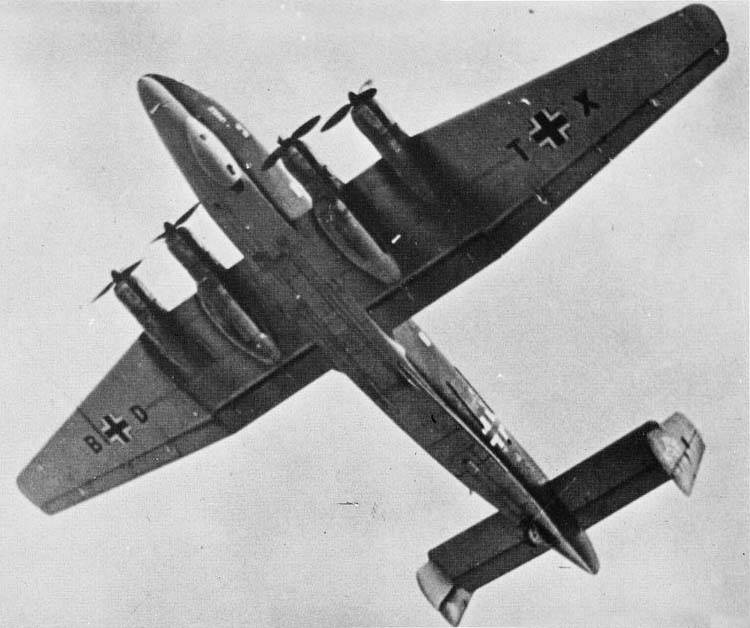
At the end of 1943 work began on a new modification of the basic design - Ju.290b-1, which, in fact, was a new aircraft, not a modification.
The trapoclappe was removed from the structure, thereby excluding the possibility of using the aircraft as a transport vehicle. Ju.290b was intended exclusively for the role of naval scout and long-range high-altitude bomber.
The design of the B-1 was reinforced, and the cabins were supposed to be leakproof. The Borzig pressurized turrets with four MG-131 machine guns in each were installed in the nose and tail, on the fuselage there were two pressurized towers with a pair of MG-151/20 cannons in each, a remotely-controlled turret with a pair of MG-151 / was also located under the fuselage 20. An aim post at the site of the lower gondola was equipped for this tower. Experienced Ju.290b-1 flew in the summer of 1944 without a pressurized cabin, with wooden mock-ups of towers.
But another aircraft, the Ju.290b-2, was proposed in the series.
It was distinguished by the lack of sealing of the towers and the cabin, the installation of the MG-151 side guns, the replacement of the tail turret with the MG-131 shooting installation for two MG-151/20 cannons according to the A-8 model. But the plane did not go into the series, the lack of resources already affected.
For the combat use of Ju-290a of all modifications as naval scouts, they formed the FAGr.5 group, which was deployed in Mont de Marsan (France). Ju-290A from this group were used to detect allied sea convoys on the far approaches to the British Isles and to aim submarines on these convoys. In August 1944, after the Allies landed in France, the group was relocated to Germany.
Almost until the last days of the war, Ju-290a aircraft were used in the I / KG 200 special-purpose group, performing secret operations.
In addition to transporting someone to Spain, during one of these operations, the Junkers Ju-290a, flying out of Vienna on November 27, 1944, landed five Arab paratroopers south of Mosul (Iraq).
The Junkers Ju-290a was a rather rare subclass of long-range four-engine scouts in the Luftwaffe. Despite its small number, and a total of 65 cars were produced, the Ju-290a played a very significant role together with the FW.200 “Condor” in ensuring the activities of submarines in ocean communications.
In the initial period of World War II, airplanes were very significant help for German submarines, but the appearance of escort aircraft carriers as part of the convoy guards significantly reduced the effectiveness of these aircraft.
But in general, the aircraft was very good both in terms of performance characteristics, and in terms of weapons and capabilities. And one can only express satisfaction that the Nazis simply could not create a sufficient number of such machines.
LTX Ju.290a-7:
Wingspan, m: 42,00.
Length, m: 29,10.
Height, m: 6,80.
Wing Area, m2: 203,70.
Weight, kg:
- normal take-off: 45;
- maximum take-off: 46 000.
Engine: 4 x BMW-801D x 1700.
Maximum speed, km / h: 435.
Cruising speed, km / h: 350.
Practical range, km: 6.
Rate of climb, m / min: 180.
Practical ceiling, m: 6 000.
Crew, person: 9.
Armament:
- two guns MG-151/20 - one each in two upper towers with hydraulic;
- two guns MG-151/20 in side installations;
- one gun MG-151/20 in the nose of the lower gondola;
- one gun MG-151/20 in the tail unit;
- one gun MG-151/20 in the nose;
- one 13-mm machine gun MG-131 in the rear of the gondola.
Up to 3000 kg of bombs or 3 missiles Hs.293, or Hs.294, or FX-1400 Fritz-X.
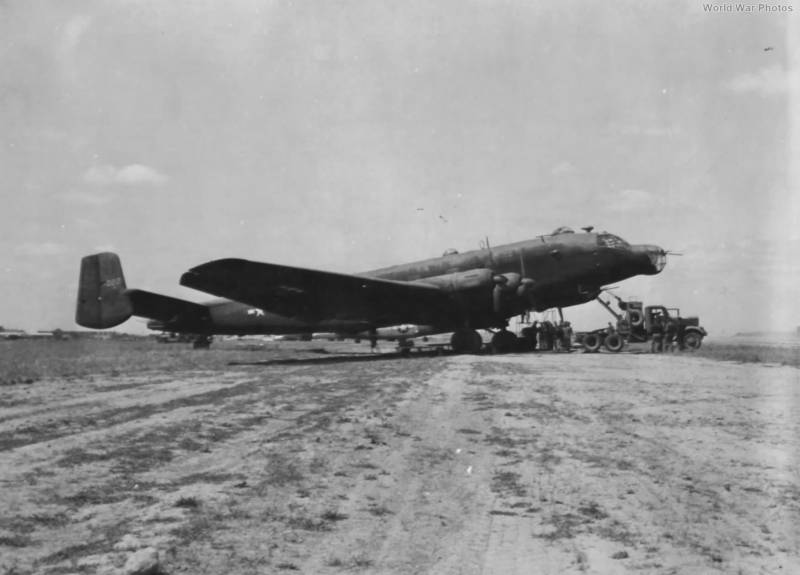
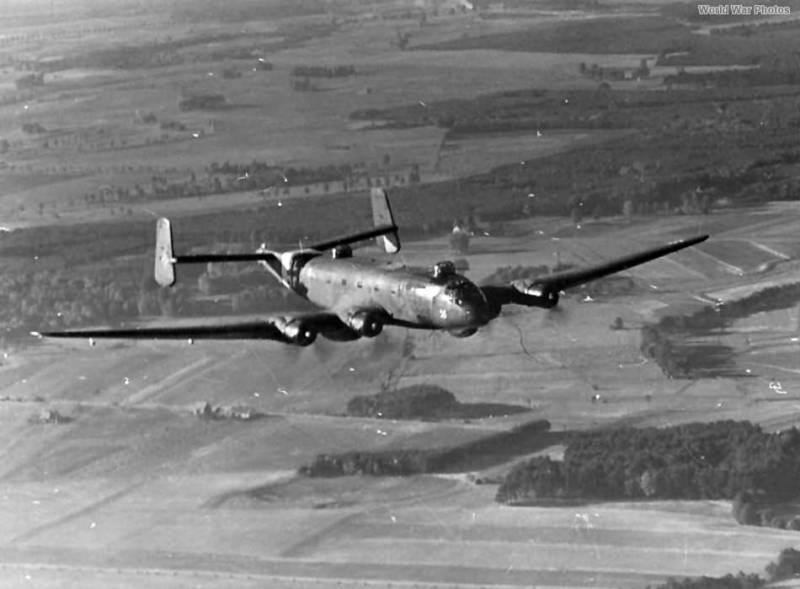
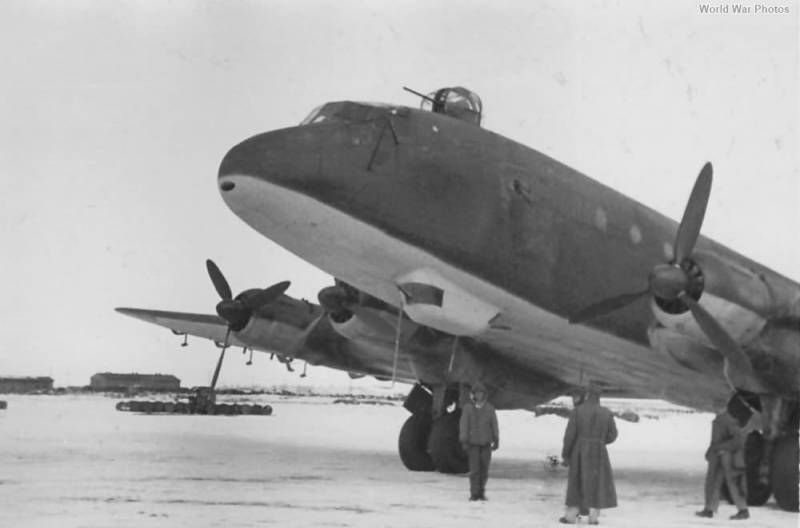
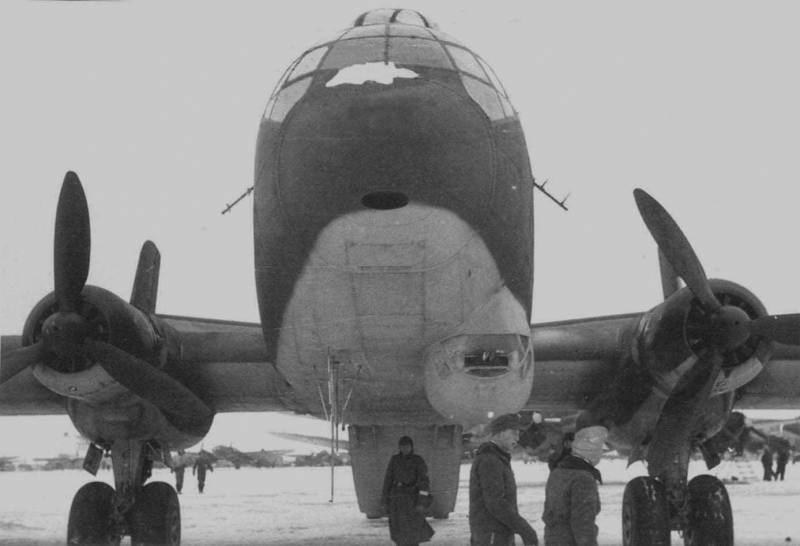
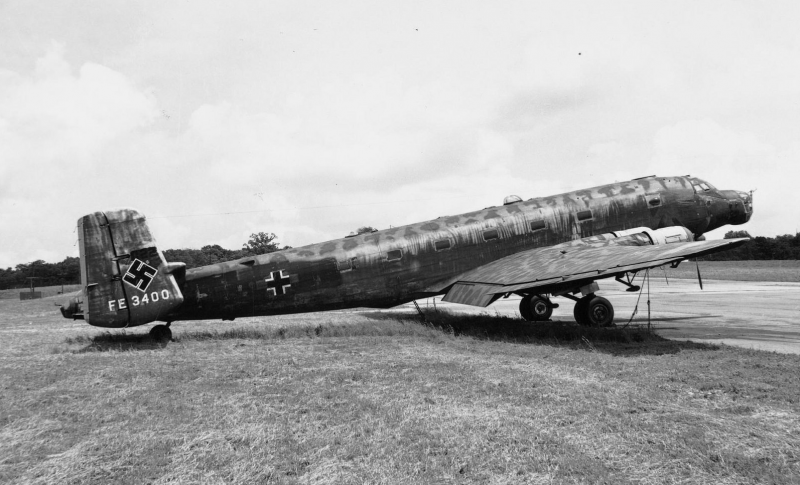
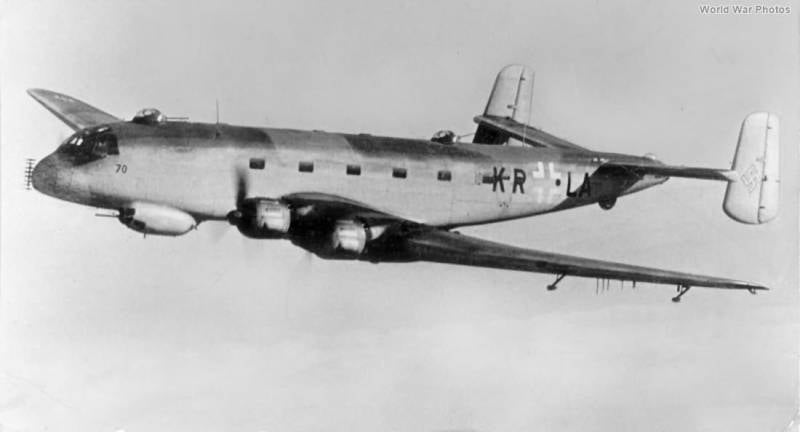
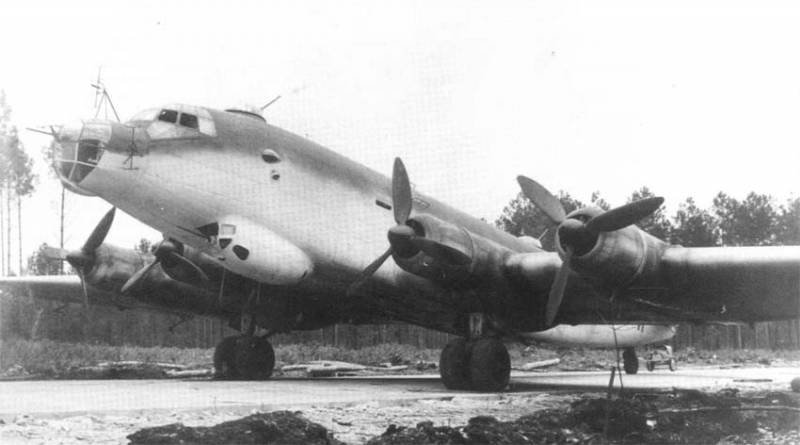
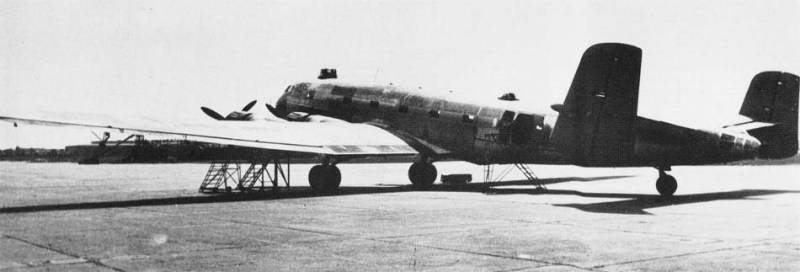
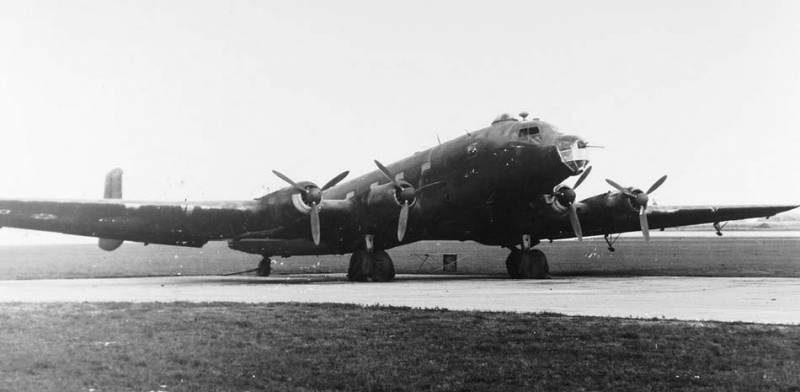
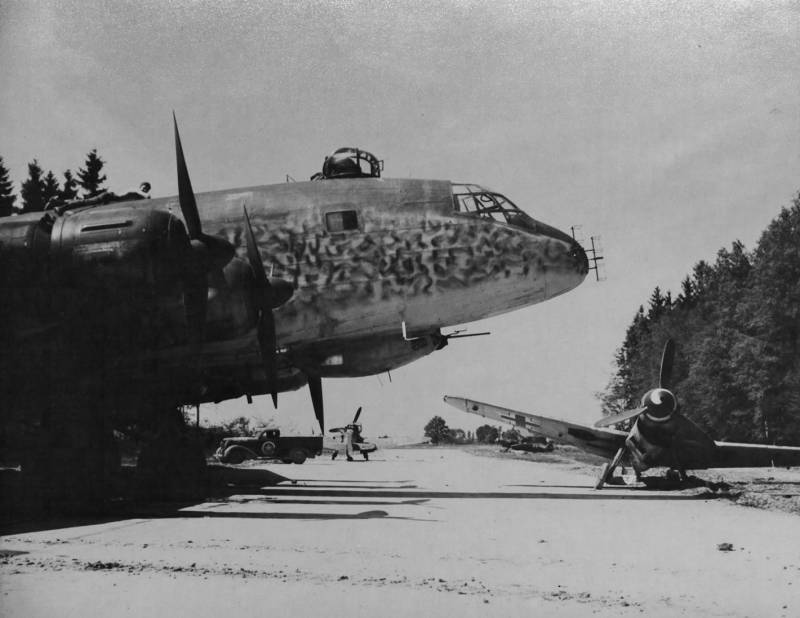
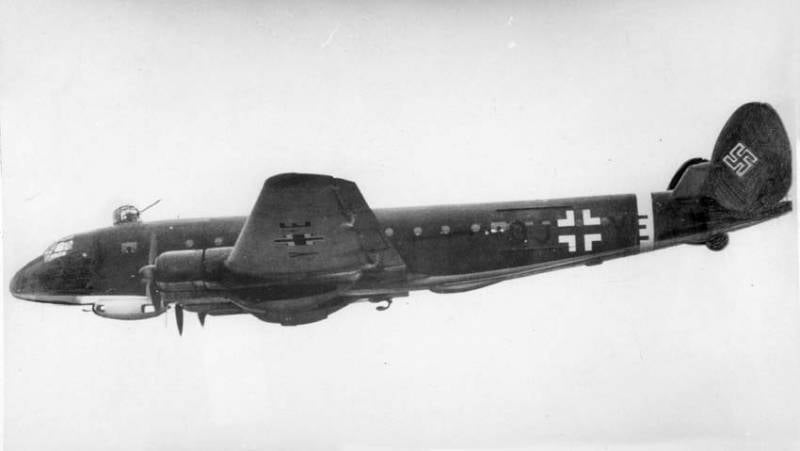
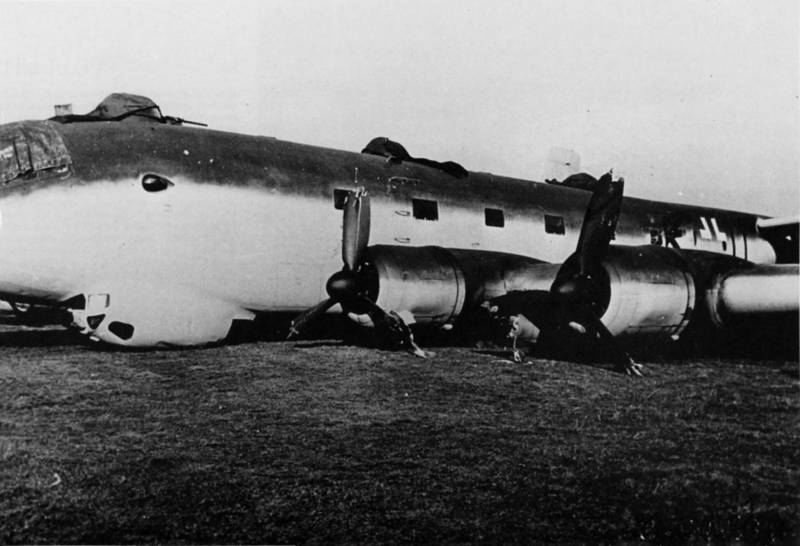
Information